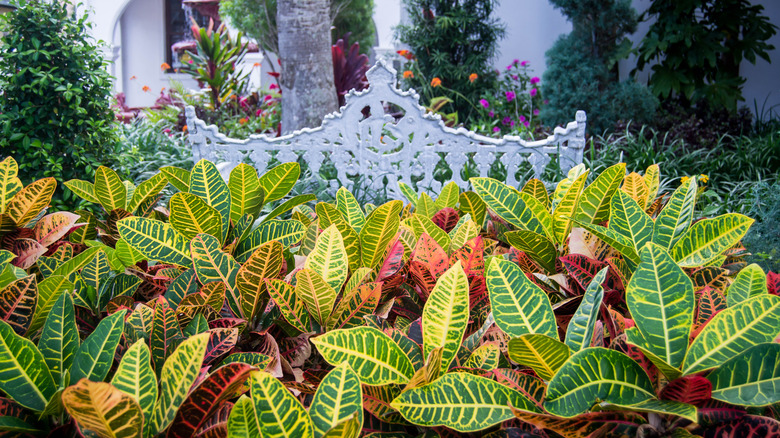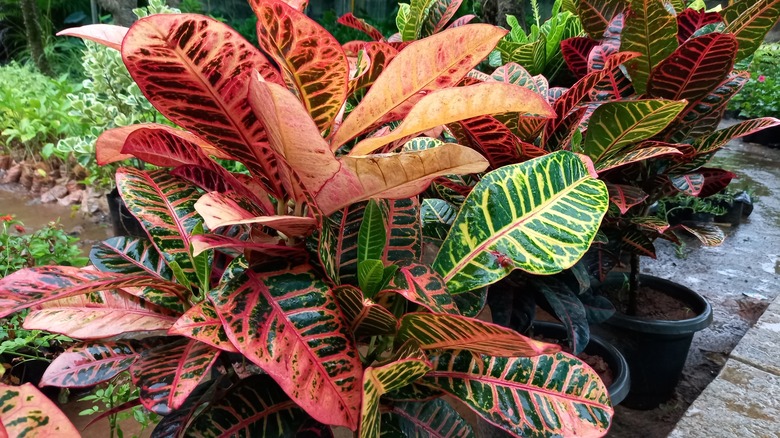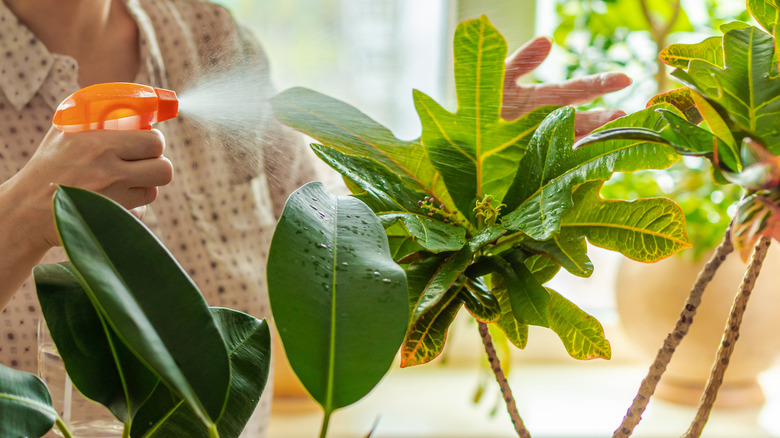Why You Should Harden Off Croton Plants Before Moving Them Outdoors
Croton plants can make a wonderful addition to your interiors with their rainbow-colored leaves and fairly low-maintenance requirements. They can also be moved outdoors during the warmer months to add some bright splashes of color to your outdoor living spaces, but you can't just move them from a protected indoor environment straight out onto a sun-filled patio. They need to be carefully conditioned to their new environment through a process commonly known as hardening off.
To harden off plants successfully, there's a required multi-step process that will gently condition your croton plants to their new home over the summer months. The process should be done over several days so that your plants don't go into shock and end up losing all their leaves. Croton plants can be quite sensitive to any change in their environment so moving them outside has to be done gradually and with care. You might find that no matter how carefully you follow this process, your plants will still lose a few leaves but they should recover quickly as they adapt to their new environment. Take care when handling your plants because the sap can cause skin irritation. It's a good idea to wear gloves when working with sappy plants like crotons, whether you're trimming them, repotting them, or even just moving them around.
Transitioning your plants to the outdoor environment
The first step to hardening off your croton plants is to get them used to the outdoor environment without exposing them to direct sunlight. To move your houseplants outdoors over summer, you want to do this gradually over several days. Wait until the outdoor nighttime temperature is sitting comfortably over 50 to 55 degrees Fahrenheit. Crotons are tropical plants and are susceptible to cold temperatures. They need both warmth and humidity to grow happily. If exposed to cold temperatures, their leaves will droop or may even fall off.
On the first day, move your indoor plants to a protected spot outdoors such as a shaded patio or porch. Leave them out for around three to four hours during the day and then bring them back in again overnight. The following day do the same but leave your plants out for one extra hour before bringing them back inside again for the night. On the third day, you can repeat this process, extending the time outdoors for an extra hour. On the fourth day, leave your plants out for the entire day, but bring them in overnight. After the four days of transitional hardening off, you can leave your croton plants outside all day as well as all night. The final step in the hardening off process is to get your croton plants used to sunlight.
Getting your croton plants used to sunlight
You want to expose your plants to sunlight gradually over three or four days. On day one, move your plants to a sunny position in the morning for a couple of hours and then move them back into the shade. Follow the same process for the next two to three days, but extend the time that the plants are exposed to sunlight by one or two hours each day.
After around four days of conditioning your plants to sunlight, you can leave them in the sunny spot permanently. It's best to choose a spot that only gets morning or dappled sunlight rather than exposing your croton plants to the scorching afternoon sun, although you will find some varieties that will grow quite happily in full sun. As your plants get used to growing in sunlight, you'll notice that the colors in their leaves start to brighten up. Make sure you remember to water your plants regularly, and look for the telltale signs your croton plants are in trouble and possibly need water.
Once summer is over and the weather starts to cool down again in the fall, remember to bring your croton plants back inside to protect them from possible frost and cold temperatures. According to North Carolina Extension, you should bring your croton plants in once the temperature drops below 50 degrees Fahrenheit. Once again, you might find that they'll drop a few leaves because they're adjusting to a new environment.


